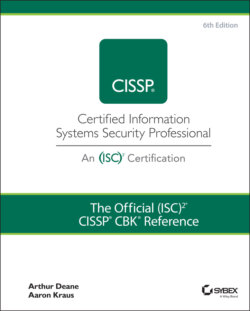Читать книгу The Official (ISC)2 CISSP CBK Reference - Leslie Fife, Aaron Kraus - Страница 105
Develop and Document the Scope and the Plan
ОглавлениеThe BCP itself is the organization's commitment to maintaining the operations of the business, and the steps the organization takes to do so. This plan focuses on the people, processes, and technologies on which the business relies to deliver goods and services to its customers. The information derived from your BIA activities should be used to document the scope of your business continuity plan.
The BCP must protect an organization's critical business functions and its customers and provide the capability for an organization to continue effective business operations at a service level and in a time period that meets any legal and regulatory requirements in addition to the organization's defined MTD, RTO, and RPO (discussed in the previous section).
The scope of the BCP must encompass all of the organization's operations, including each business area and within every geographic region that the organization does business. While there is no one-size-fits-all for business continuity planning, the scope of most plans includes the following:
Critical business functions
Threats, vulnerabilities, and risks
Data backup and recovery plan
BCP personnel
Communications plan
BCP testing requirements
Once your organization has completed a business impact assessment, you should have a list of CBFs and an understanding of your organization's threshold for downtime and loss for each of them. The next phase of continuity planning involves identifying the specific mechanisms and procedures to mitigate risks to your CBFs and maintain compliance with your established MTD, RTO, and RPO.
As with any good plan, a BCP involves people, processes, and technologies — in that order. In next three sections, we cover some of the requirements and techniques involved in protecting these three categories of assets.
